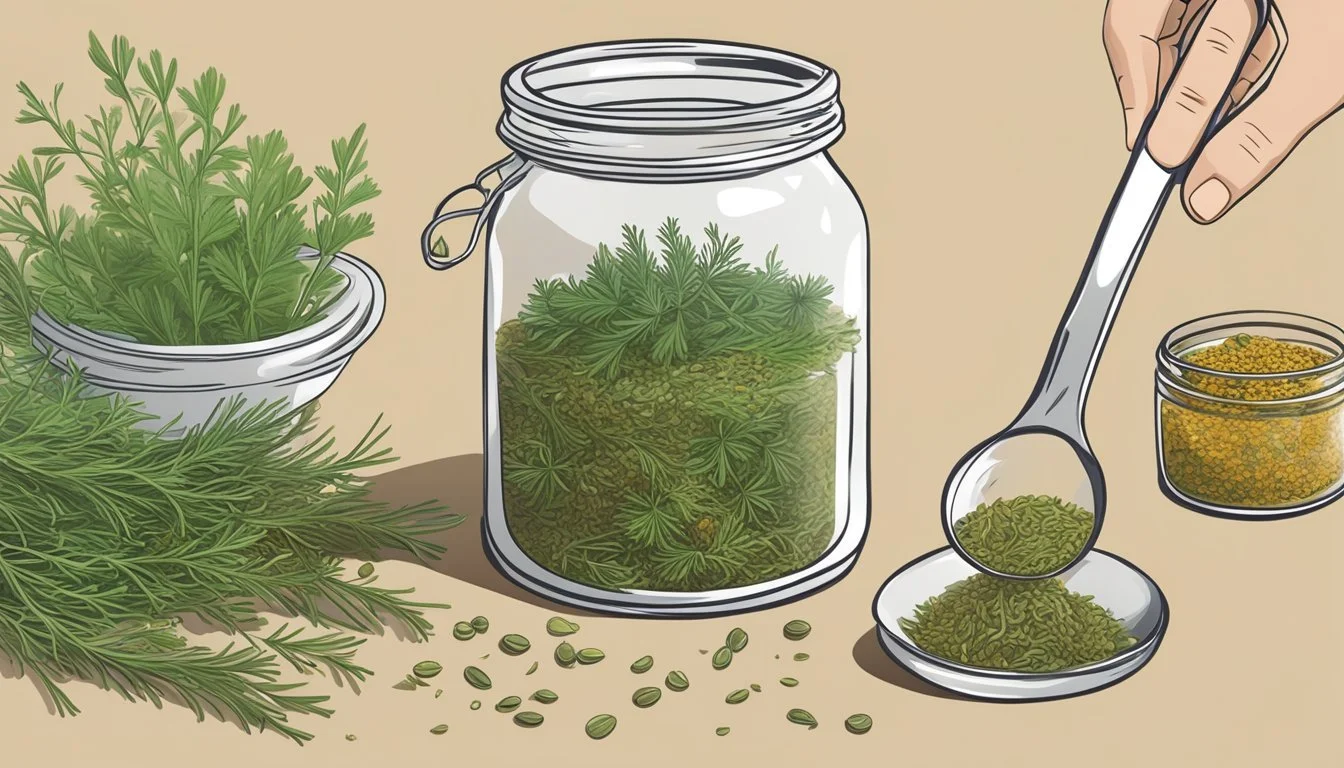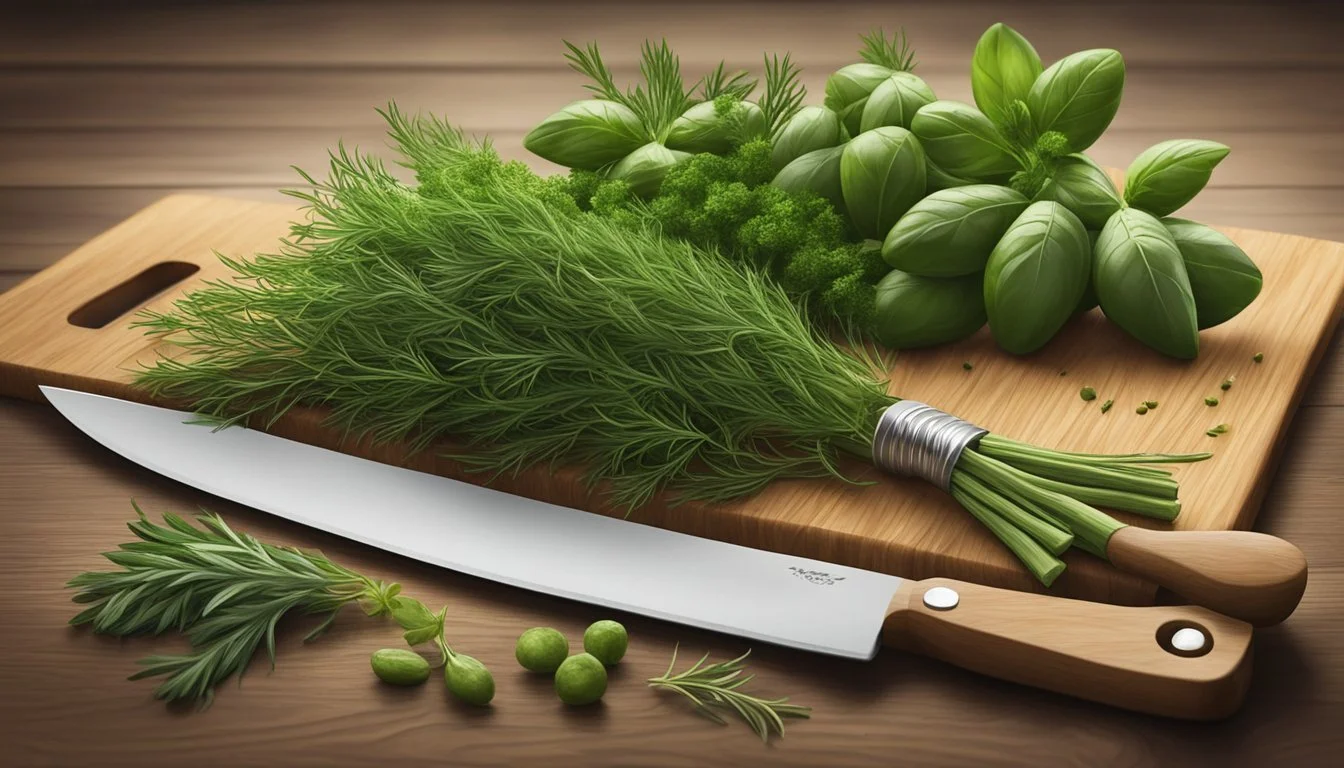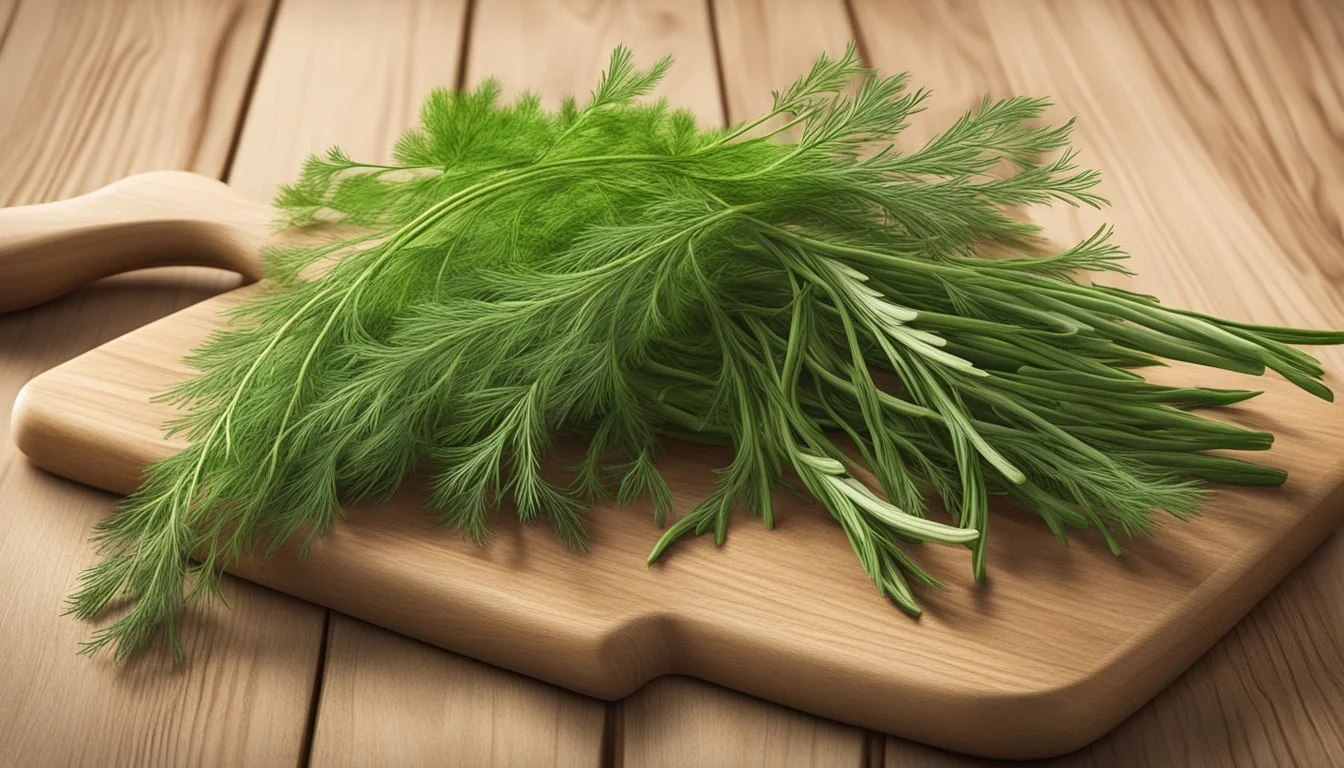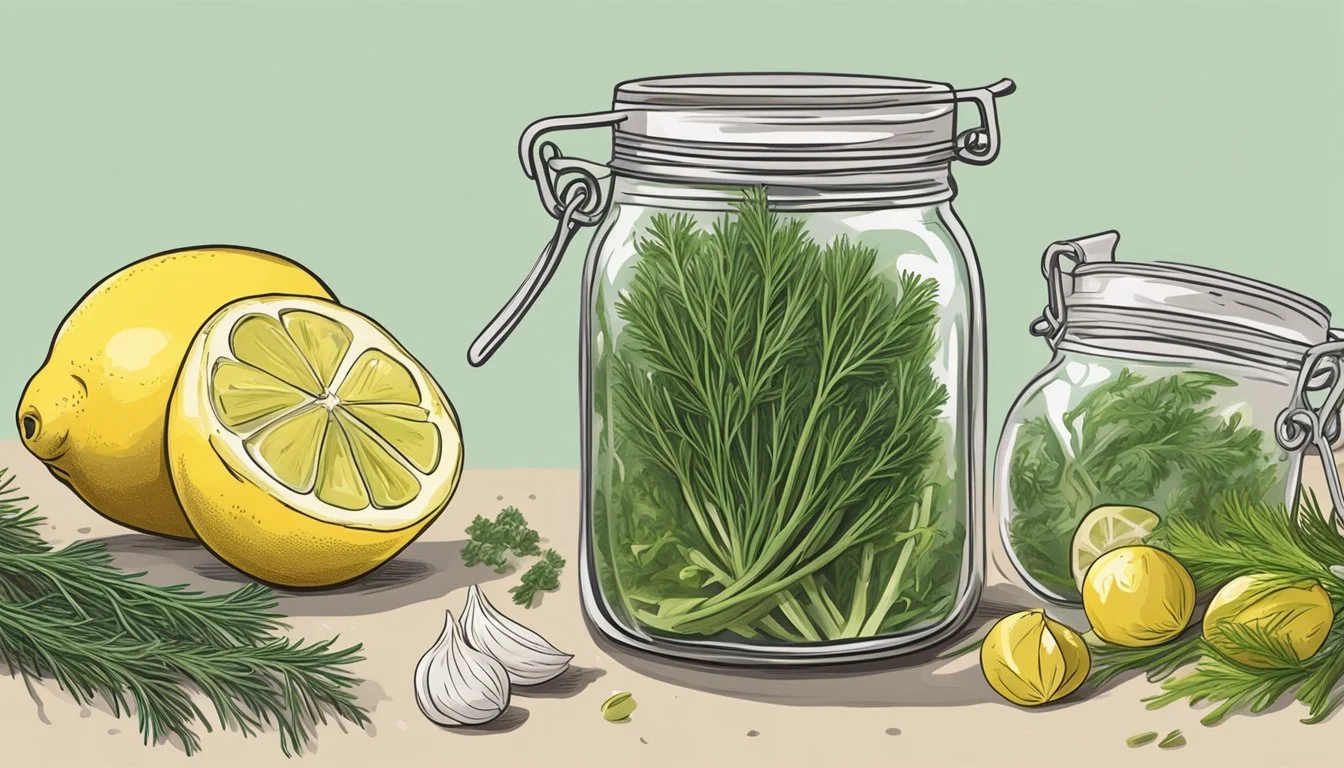How to Substitute Dill for Tarragon
A Simple Herb Swap Guide
Substituting dill for tarragon can be a practical solution in the kitchen when tarragon is unavailable or when a cook desires a change in flavor profile. Tarragon, with its distinctive licorice-like taste, is not to everyone's palate, and dill offers a more subtle aniseed flavor that can blend well into a variety of dishes. Understanding the flavor nuances and proper ratios ensures that the essence of the original recipe is retained, even with this alteration.
Dill's versatility makes it a suitable stand-in for tarragon in numerous recipes. The herb's light, grassy notes with a hint of anise make it appropriate for dishes ranging from seafood (What wine goes well with seafood?) and salads to soups and sauces. When using dill as a substitute, it is essential to consider the type of tarragon initially called for in the recipe—fresh or dried—as this will influence the quantity of dill necessary for achieving an optimal flavor balance.
The herb's compatibility with the ingredients it accompanies is another consideration when substituting dill for tarragon. Dill pairs well with the flavors commonly associated with tarragon, such as chicken, fish, and vegetables, and offers a comparable freshness to dishes. It is a staple in many culinary traditions and can be a readily available alternative, especially when fresh tarragon is hard to mimic with a substitution. Cooks may confidently utilize dill, adjusting quantities to suit their tastes and the demands of the recipe, to deliver an enjoyable dining experience.
Understanding Herbs and Their Flavors
In the culinary world, herbs are essential for adding depth and character to dishes. Two popular herbs with unique flavor profiles are tarragon and dill, each bringing its own distinctive aroma and taste to the kitchen.
Defining Herb Characteristics
Herbs are a pivotal component in cooking, serving both as flavor agents and garnishes. They can be classified by their flavor intensity, aroma, and whether they are used fresh or dried. Fresh herbs usually have a more subtle taste and are often added towards the end of cooking to preserve their flavor, while dried herbs are more concentrated and best added early in the cooking process to allow their flavors to infuse.
Flavor Intensity: Ranges from mild to robust
Aroma: Can be delicate or pungent
Form: Fresh or dried, impacting usage and potency
The Unique Profiles of Tarragon and Dill
Tarragon is known for its strong, slightly sweet flavor with a hint of licorice or anise. This flavor comes from the essential oils in tarragon leaves, which are resilient to heat, making them suitable for both cooked and raw dishes.
Flavor: Slightly sweet, anise-like
Aroma: Similar to licorice
Form: Available in both fresh and dried, with fresh leaves being more aromatic
Dill, by contrast, has a grassy and earthy taste with a faint anise flavor that is less pronounced than in tarragon. Fresh dill is light and feathery with a delicate fragrance, often used to complement seafood and sauces, while dried dill offers a more potent earthy tone.
Flavor: Grassy, earthy with a trace of anise
Aroma: Fresh and aromatic when fresh; more intense when dried
Form: Fresh dill is used for its superior fragrance, while dried dill provides a stronger flavor
The Role of Tarragon in Cooking
Tarragon plays a distinct role in culinary arts, especially within French cuisine, due to its unique flavor profile. It is a key herb that can transform simple dishes into gourmet experiences.
Tarragon's Culinary Uses
Tarragon, with its licorice-like taste, is a versatile herb in cooking. Its aromatic leaves enhance the taste of various dishes. This herb is particularly noted for its ability to marry well with:
Chicken: Tarragon's anise-like flavor complements the delicacy of chicken, elevating the overall taste.
Eggs: It adds a fresh element when blended into omelets or scrambled eggs.
Salads: Fresh tarragon leaves lend a distinctive flavor to green salads and are a component in many vinaigrettes.
Vinaigrettes: The bright notes of the herb balance the acidity in dressings for an intricate flavor profile.
Characteristic Dishes Featuring Tarragon
Certain dishes are emblematic of tarragon's pivotal role in enhancing flavors, including:
Béarnaise Sauce: This classic French sauce utilizes tarragon for its signature taste—indispensable for steak and asparagus.
French Cuisine: Tarragon is often integrated into sauces, stews, and soups, contributing to the refined taste associated with French cooking.
Tarragon Substitute: If a recipe calls for tarragon and it is unavailable, a commonly used substitute is chervil, which imparts a similar mild anise flavor to dishes such as chicken, eggs, and salads.
Selecting a Substitute for Tarragon
When a recipe calls for tarragon, and it's unavailable, selecting a suitable substitute is crucial to match the unique licorice flavor of tarragon without overpowering the dish.
Factors to Consider in Substitution
Flavor Profile: Consider how closely the substitute's flavor matches tarragon's mild licorice taste without dominating other flavors.
Cooking Application: Determine whether the substitute works well in the specific dish, be it soups, salads, or seafood.
Herb Potency: Adjust the quantity based on the substitute's potency compared to tarragon.
Dill and Other Herbs as Alternatives
Dill: While dill offers a grassy and slightly anise-like flavor, it lacks the strong licorice taste, making it a softer alternative to tarragon. Use in a 1:1 ratio when substituting.
Tarragon Quantity Dill Quantity 1 tsp 1 tsp
Fennel: With its sweet aniseed flavor, fennel fronds can be a good stand-in for tarragon. They are more potent, so use sparingly.
Chervil: This delicate herb resembles tarragon's anise note and is excellent in light dishes. Substitute it at a 1:1 ratio.
Anise Seed: A robust option that should be used sparingly due to its strong licorice flavor. Start with a pinch for each tablespoon of tarragon required.
Remember, while dill can replace tarragon to a degree, expecting an exact flavor match is unrealistic given their distinctive flavor profiles.
How to Use Dill as a Tarragon Substitute
When choosing to use dill as a substitute for tarragon, it is essential for cooks to consider the flavor profile and strength differences. This section guides on how to effectively use dill in place of tarragon to achieve the desired culinary results.
Adjusting Quantities and Ratios
To effectively use dill as a substitute for tarragon, it's crucial to adjust the quantity used in the recipe:
Fresh Dill: Equal parts of fresh dill can typically be used as a stand-in for fresh tarragon.
Dried Dill: When substituting dried dill for dried tarragon, begin with half the amount and add to taste.
It's important to taste the dish periodically when using dill as a substitute, as dill has a less pronounced licorice flavor compared to tarragon.
Best Practices for Substituting Dill
Here are some best practices to follow when using dill as a tarragon substitute in cooking:
Use fresh dill when the recipe calls for fresh tarragon, as the texture and moisture content will be more similar compared to using dried forms.
If using dried dill weed instead of dried tarragon, keep in mind the shorter shelf life of dried dill. Ensure it's fresh to maximize flavor.
Dill pairs exceptionally well with seafood, making it an excellent substitute in recipes like fish or shellfish dishes where tarragon is required.
By adhering to these considerations, one can seamlessly integrate dill into recipes as a tarragon substitute without compromising the authenticity of the dish's flavor.
Pairing Dill with Various Ingredients
When substituting dill for tarragon, understanding the complementary flavors that work well with dill and the types of recipes that can incorporate it as a substitute is crucial.
Complementary Flavors for Dill
Dill pairs exceptionally well with a range of flavors, enhancing dishes with its unique taste profile. Here are some key ingredients that harmonize with dill:
Citrus: The brightness of citrus like lemon and hints of orange zest bring out dill's fresh, tangy qualities.
Vinegar: Acetic flavors from different types of vinegar complement the grassy notes of dill.
Garlic: Garlic adds depth and assertiveness to dill's delicate flavor, especially in Mediterranean cuisine.
Seafood: Dill's slight sweetness and aromatic profile make it an excellent match for various seafood dishes.
Poultry: It provides a herbaceous lift to chicken and turkey, particularly when roasted or grilled.
Salads: Dill can be a refreshing addition to salads, offering a counterbalance to creamy or oily dressings.
Recipes That Welcome Dill as an Herb
Dill seamlessly integrates into various recipes. Its versatility allows it to replace tarragon in many cooking applications:
Seafood Dishes: Dill is traditionally used in fish recipes such as grilled salmon, poached white fish, or seafood salads, imparting a delicate flavor that isn't overpowering.
Poultry Seasoning: It's used to season chicken and turkey, either as part of a rub or in marinades, enhancing the meat with its soft, green, and slightly anisette-like nuances.
Salad Dressings: Dill contributes to an aromatic punch in vinaigrettes and creamy dressings, pairing well with lettuce, cucumbers, and other crisp vegetables.
Cucumber Salads: This herb's freshness complements the cool, crisp nature of cucumbers, often brightened up with lemon juice or vinegars.
Yogurt Sauces: In Mediterranean and Middle Eastern cuisines, dill is a staple in yogurt-based sauces, where it is combined with spices and citrus elements.
By focusing on these complementary ingredients and recipes, dill can successfully be used in place of tarragon while maintaining the integrity of the dish's flavor profile.
Alternatives Beyond Dill
While dill is a popular substitute for tarragon, there are numerous other herbs that can provide a similar flavor profile or complement the intended dish. These alternatives span across various families of herbs, each offering unique aromatic qualities.
Exploring a Range of Tarragon Replacements
Marjoram and Basil are both members of the mint family, Lamiaceae, and offer a sweet flavor that can substitute for tarragon. Oregano, another Lamiaceae family herb, brings an earthy, robust taste.
Fennel fronds: With a texture similar to dill and a mild anise flavor, fennel fronds can replace tarragon in salads and seafood dishes.
Anise: Although stronger, a pinch of anise seed can replace tarragon to infuse the licorice flavor in a recipe.
When it comes to the forms of these herbs, the potency varies:
Fresh basil: Often milder than dried, use it in larger quantities.
Dried oregano and dried basil: More concentrated, so reduce the amount when substituting dried for fresh tarragon.
Dried herbs: Including dried marjoram, use about a third of the amount compared to fresh tarragon.
Cuisine-Specific Substitutes for Tarragon
Certain herbs are better suited to specific cuisines or dishes. Understanding this can lead to a tailored choice when replacing tarragon.
Mediterranean dishes: Rosemary and thyme from the mint family can infuse a strong, piney flavor.
Italian cooking: Fresh basil is a staple for its sweet, pepperiness, while dried oregano adds depth to sauces.
French cuisine: Dried tarragon is commonly used, but in its absence, a mixture of parsley from the sunflower family and a dash of cinnamon can mimic its sweet-tangy flavor profile.
Enhancing Recipes with the Right Herbs
Herbs play a pivotal role in culinary arts, transforming the flavor profiles of dishes and driving the creative process of recipe development. Selecting the appropriate herbs can elevate a simple dish to a masterpiece of taste.
The Impact of Herbs on Flavor Profiles
Herbs are the essence of flavor in many culinary traditions, from Italian to French cuisine. They add complexity, depth, and distinction to recipes. For instance, the right aromatic herb can turn an ordinary marinade into an extraordinary one, infusing the food with nuanced flavors. Tarragon, a staple in French cuisine, brings a licorice-like sweetness to dishes and is often included in the classic herbes de Provence blend. Its unique taste is especially well-suited for enhancing chicken and seafood dishes.
When substituting tarragon for dill in recipes, one must consider the resultant flavor change. Tarragon's bolder taste can dominate a dish if used in excess. It's best to start with small amounts and adjust to taste, maintaining the balance of flavors in dishes like soups, sauces, and marinades.
Herb Cuisine Common Pairings Substitution Ratio (Fresh Herbs) Dill European Fish, Potatoes, Creamy Sauces 1:1 (Tarragon for Dill) Tarragon French Chicken, Seafood, Vinaigrettes 1:1 (Dill for Tarragon)
Tips for Herb Selection in Recipe Development
In recipe development, the selection of herbs should be intentional and deliberate. It's crucial to understand the characteristics of each herb and how it will interact with other ingredients. For those looking to infuse dishes with a European flair, incorporating herbs like tarragon can offer a sophisticated twist. Its aniseed flavor is less prevalent in European cooking but can substitute for dill when seeking to impart a similar yet distinct taste.
Before adding tarragon to a recipe as a substitute for dill, chefs should consider the overall flavor palate. They should take into account the main components of the dish to ensure that the substitution will harmonize rather than clash. Freshness is also key; fresh herbs should look vibrant and smell aromatic. If fresh tarragon is unavailable, one can use a third of the amount in dried form compared to fresh dill due to its more concentrated flavor.
Factor to Consider Description Flavor Harmony Ensure that tarragon's licorice-like flavor complements the other ingredients in the recipe. Amount Used Start with a small quantity of tarragon and adjust as needed. Freshness Fresh herbs offer a more vibrant flavor; use dried herbs sparingly.






